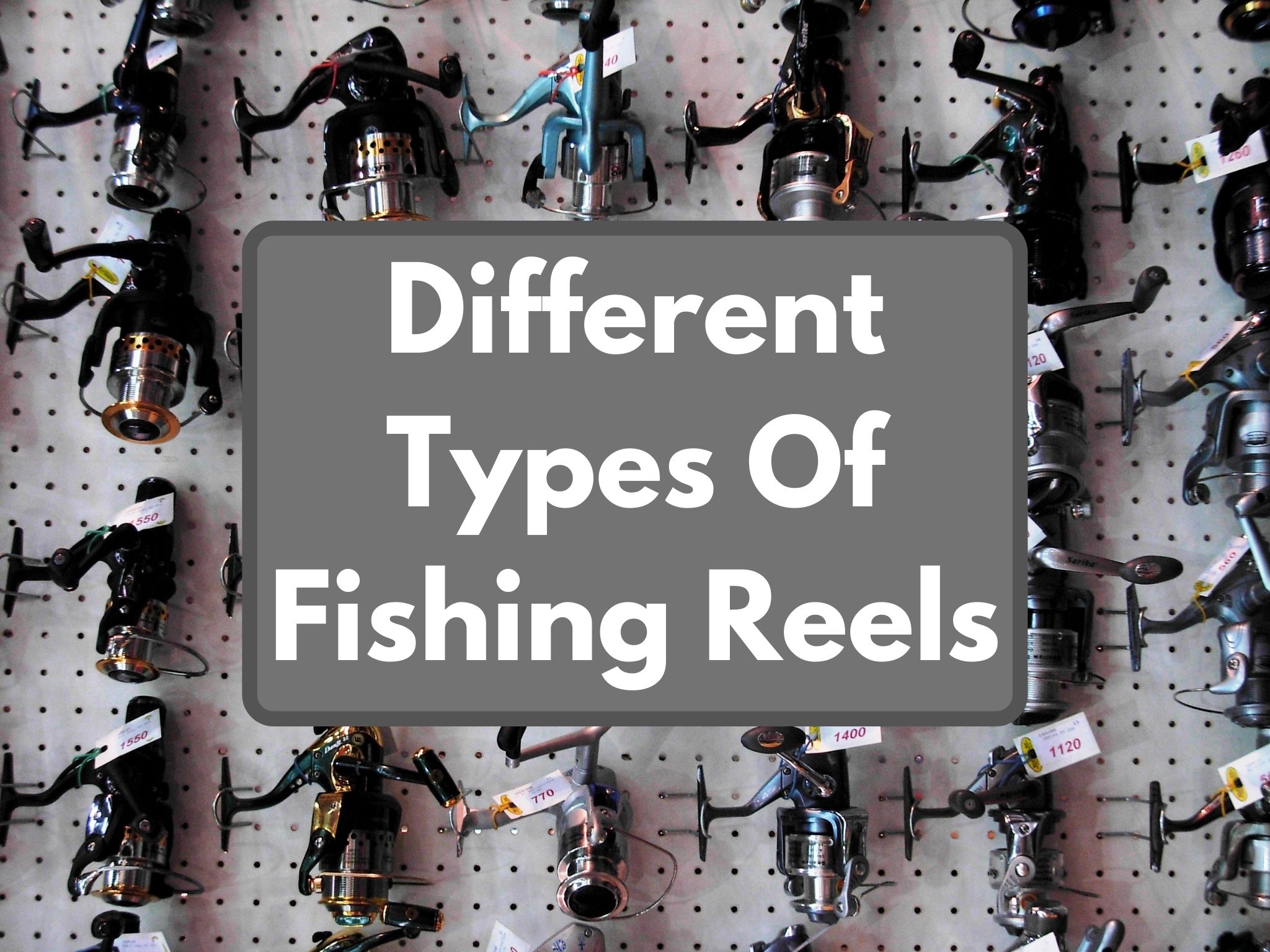There are many different types of fishing reels on the market, and each one has its own unique set of benefits and drawbacks.
In this guide, we’ll discuss the different fishing reels and their uses, along with some tips on how to choose the right reel for your needs.
So whether you’re a beginner or an experienced angler, read on to learn more about different kinds of reels.
Different Types Of Fishing Reels Explained
There are 9 different types of reels for fishing, each with their own unique features and strengths.
The main thing they have in common is that they all attach to a fishing rod toward the holder’s end of the fishing rod that keeps the fishing line contained so that it doesn’t get tangled and can dispense it properly.
The 9 kinds of fishing reels we’ll cover in this guide are:
- Spincast Fishing Reels
- Spinning Fishing Reels
- Baitcasting Fishing Reels
- Fly Fishing Reels
- Trolling & Conventional Fishing Reels
- Surf Fishing Reels
- Centerpin Fishing Reels
- Overhead Fishing Reels
- Offshore Fishing Reels
Spincast Fishing Reels
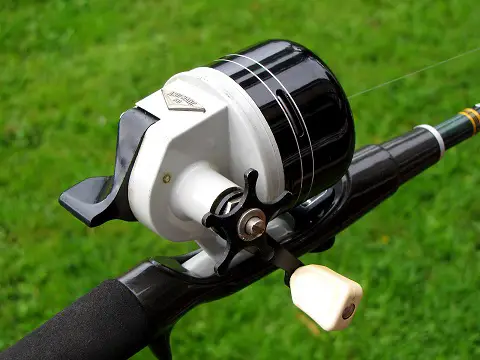
A spincast reel is the simplest type of fishing reel, and it’s a great choice for beginners.
It’s easy to use and doesn’t require a lot of maintenance.
Spincast Reel Design
A spincast reel has a closed housing that encloses the spool, and it has a button on the back that you press to release the line.
They feature a drag adjustment that helps you to dial in how much resistance there is on your fishing line.
How To Cast A Spincast Reel
To use a spincast reel, you simply push down on the button to release the line, then cast your line by swinging the rod forward.
When you want to reel in your line, you just crank the handle.
You can also use your index finger to help guide the line.
Spincast Reel Pros & Cons
Spincast reels are great for small fish because they have a smaller drag system, which means there’s less risk of breaking the line.
They’re also good for fishing in areas with lots of vegetation because there’s less chance of getting tangled in vegetation with a spincast reel.
One thing to keep in mind with spincast reels is that they’re not well-suited for heavier lures or fish, so if you’re planning on doing any serious fishing, you’ll need to choose a different kind of reel.
Spinning Fishing Reels
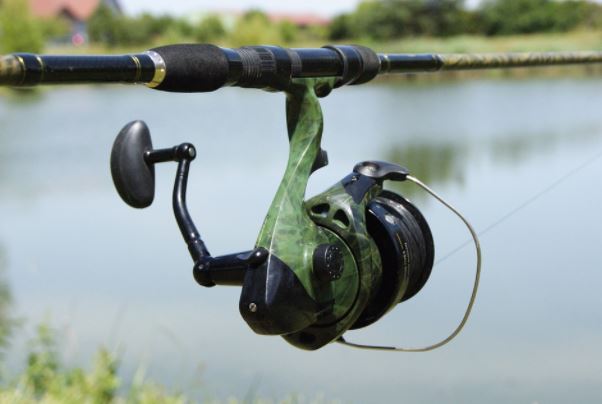
Spinning reels are the most popular choice for fishing reels.
They take a bit more experience to use versus spincast reels, but their advantages are great.
Spinning Reel Design
The biggest difference between spinning reels and spincast reels is that spinning reel spools are exposed, which means you can see how much line you have left.
They sit on the bottom of the rod rather than the top, and spinning reels also usually have a larger drag system than spincast reels, which makes them better suited for bigger fish.
How To Cast A Spinning Reel
To cast a spinning reel, you hold the rod in one hand and use your other hand to release the bail, holding the line against the rod and releasing it as you are about half way through the casting motion.
To reel the line in, crank the handle which engages the bail automatically and starts pulling in the line.
Spinning Reel Pros & Cons
One of the main advantages of spinning reels is that they can be used for a wide variety of fish, from small to large.
They’re also relatively easy to use once you get the hang of it and can cast farther than spincast reels.
However, one downside of spinning reels is that they require more maintenance than spincast reels since the exposed spool can become dirty or damaged more easily.
Baitcasting Fishing Reels
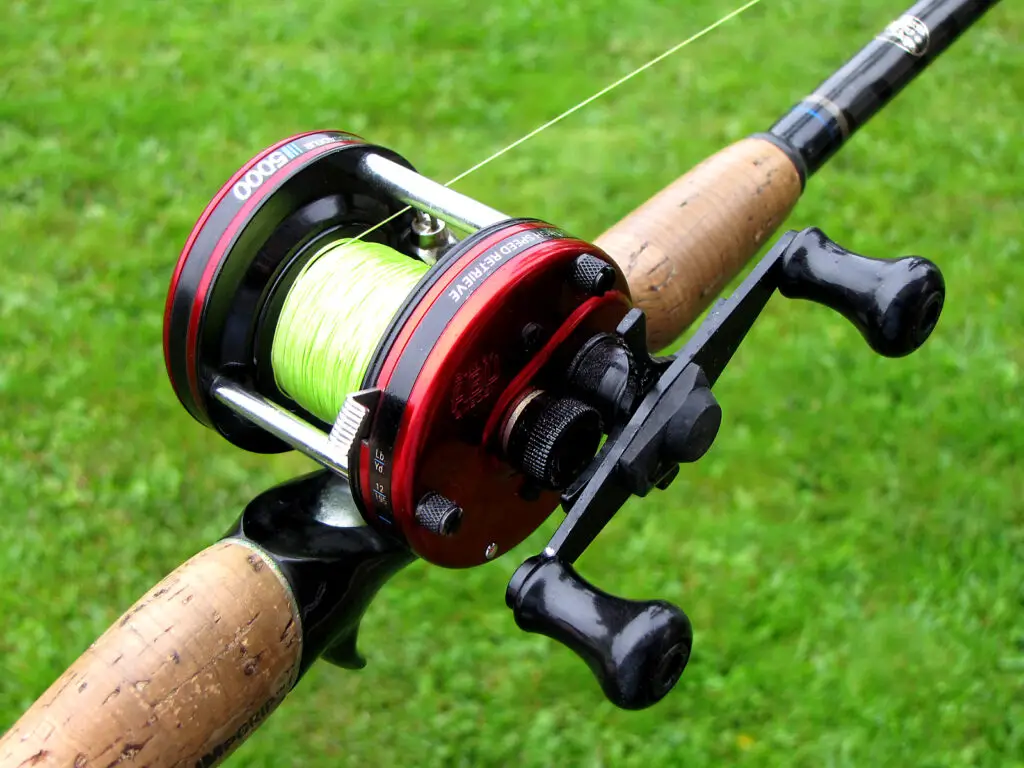
Baitcast fishing reel are similar to spinning reel in many ways, but there are a few key differences that set them apart.
First, it sits on top of the rod rather than the bottom.
They also have more moving parts than spinning or spincast reels and are a bit tougher to learn, but are the top choice of many experienced anglers for a reason.
They have a spool tension knob and a braking system which both affect how fast your line spools out of the reel, allowing you to dial in where your cast goes very effectively.
How To Cast A Baitcasting Reel
There’s no bail, so you simply press or release your thumb against the spool of line as you cast, which aids in some really excellent precision casting.
Once you’ve casted, a clip is pressed to lock the line in place, and you can reel the line in as needed.
Baitcasting Reel Pros & Cons
One advantage of baitcasting reels is that they can be used for larger fish than spinning or spincast reels.
They’re also good for making long casts and are very accurate once you get the hang of using them.
However, baitcasting reels can be more difficult to use than other types of fishing reel, so they might not be the best choice if you’re a beginner.
They also require a lot of customization and changing of settings every time you change your lure, which can be really hard for less-experienced anglers.
Lastly, baitcasting reels are more expensive than spincasting or spinner reels, running between $100-$500 per reel.
Fly Fishing Reels
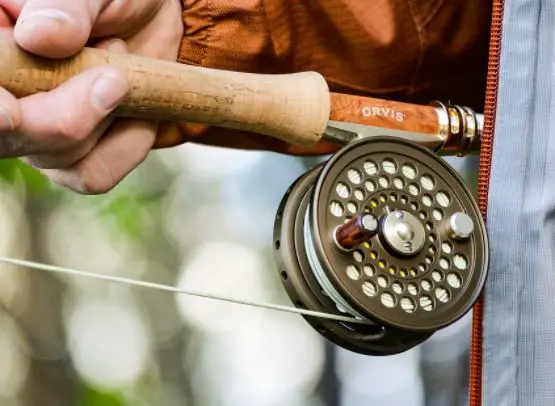
Fly fishing reels are very different than other types of fishing reel.
They don’t have a bail or drag system, and they’re not used to cast your line out.
Instead, fly fishing reels are used to store your line and help you control the fish once you’ve hooked it.
They come in three main types: single-action, double-action, and click-pawl.
How To Use A Fly Fishing Reel
To use a fly fishing reel, first you’ll need to attach it to your rod using the proper adapter.
Next, thread your line through the guides on your rod and then through the eyelet on the spool of your reel.
Once you have your line threaded through the reel, you’ll need to tie a knot at the end of your line.
Now you’re ready to start fishing!
Fly Fishing Reel Pros & Cons
One advantage of fly fishing reels is that they help you control the fish once you’ve hooked it.
They also don’t require a lot of maintenance and are very durable.
However, one downside of fly fishing reels is that they can be difficult to use if you’re not familiar with them.
Another downside is that they’re only good for fly fishing, so if you want to use another type of fishing method, you’ll need to buy a different kind of reel.
Trolling & Conventional Fishing Reels
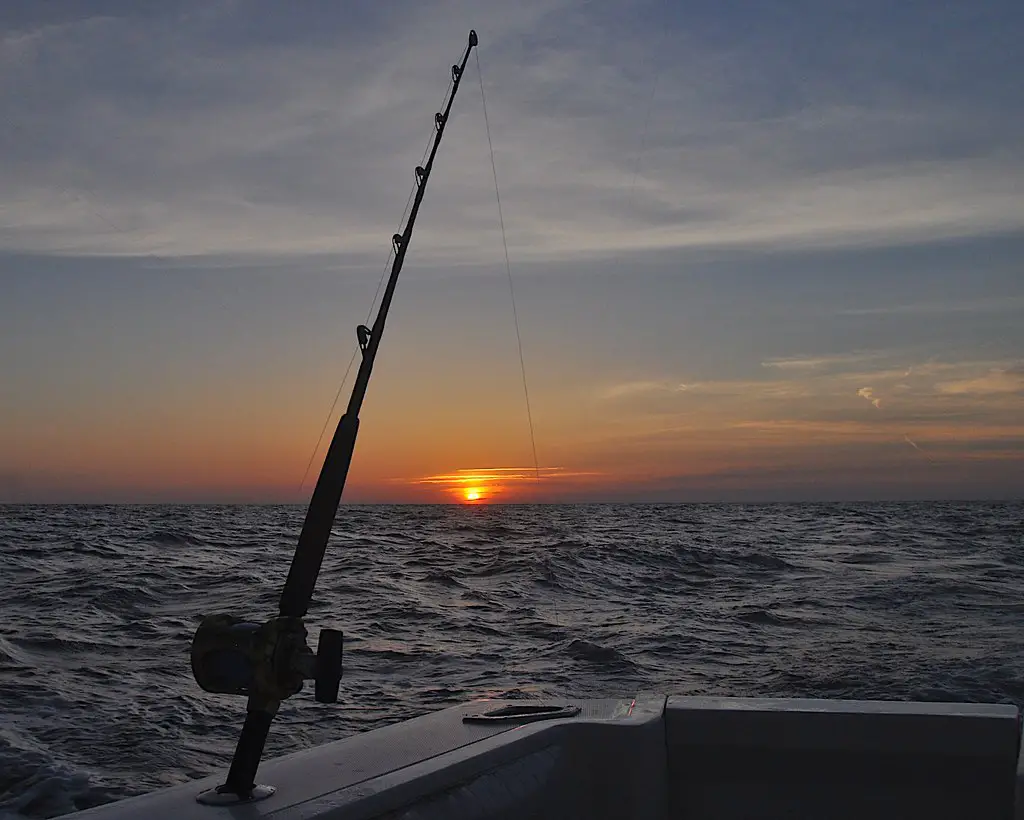
Trolling fishing reels and conventional fishing reels are used for offshore and deep-sea fishing.
Trolling fishing reels are designed to be used with downriggers, which help you to get your lure down to the depths where fish are swimming.
The two main types of trolling reels are open and level wind.
Open trolling reels have very strong frames and are best for heavy, large fish.
Level wind trolling reels feature a moving line guide that is better for trolling for smaller fish when doing offshore fishing.
How To Use A Trolling Reel
To use a trolling reel, first attach it to your rod using the proper adapter.
Then thread your line through the guides on your rod and then through the eyelet on the spool of your reel.
Once you have your line threaded through the reel, you’ll need to tie a lure or bait at the end of your line, drop it in and let enough line out until you reach the desired depth.
Trolling Reel Pros & Cons
One advantage of trolling reels is that they’re designed specifically for trolling, which is a great way to catch fish.
They’re also very durable and can last a long time with proper care.
However, one downside of trolling reels is that they can be difficult to use if you’re not familiar with them.
Another downside is that they’re only good for trolling, so if you want to use another type of fishing method, you’ll need to buy a different kind of reel, but some poles can be used with different reel types.
Surf Fishing Reels
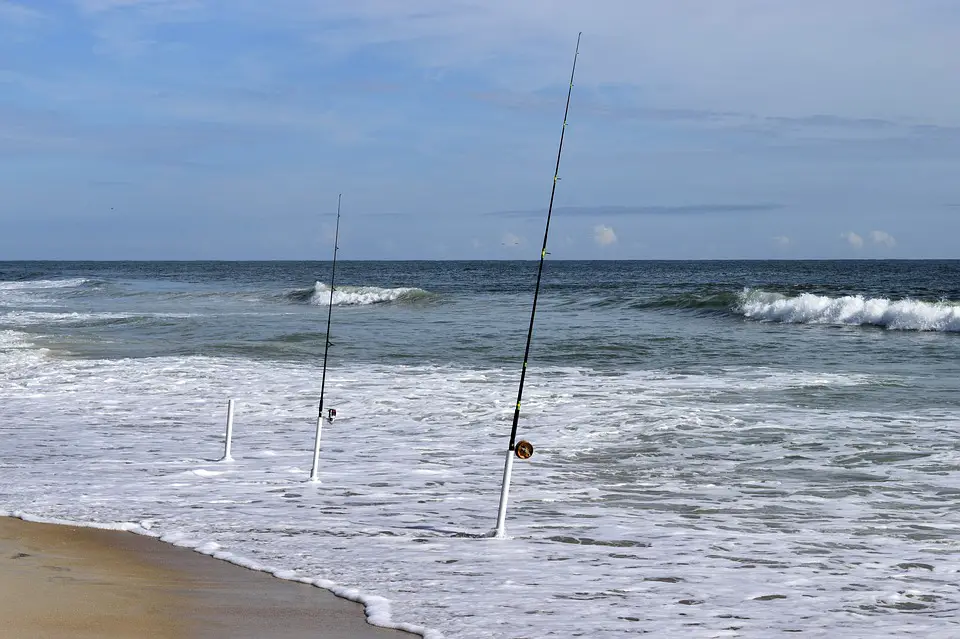
Surf fishing reels are designed for fishing from the shore in saltwater and are very lightweight, and are very similar to a spinning reel, except or you install them on a surf fishing rod, which is significantly longer than a standard fishing rod.
How To Cast A Surf Fishing Reel
Using a surfing reel is very similar to a spinning reel, where you’ll open the bailer prior to casting, then you’ll crank the reel after the cast is complete to close the bailer and reel in the line.
The main difference in casting a surf reel is your stance and the angle at which you cast, but that’s mostly focused on the action on the rod.
Surf Fishing Reel Pros & Cons
One advantage of surf fishing reels is that they’re designed specifically for fishing in saltwater from the shore.
They’re also usually more lightweight and are made of materials that can withstand the corrosive properties of saltwater, offering them more durability.
One downside of surf fishing reels is that they can be difficult to use if you’re not familiar with them.
They can also only be used when fishing from the shore into the ocean.
Centerpin Fishing Reels
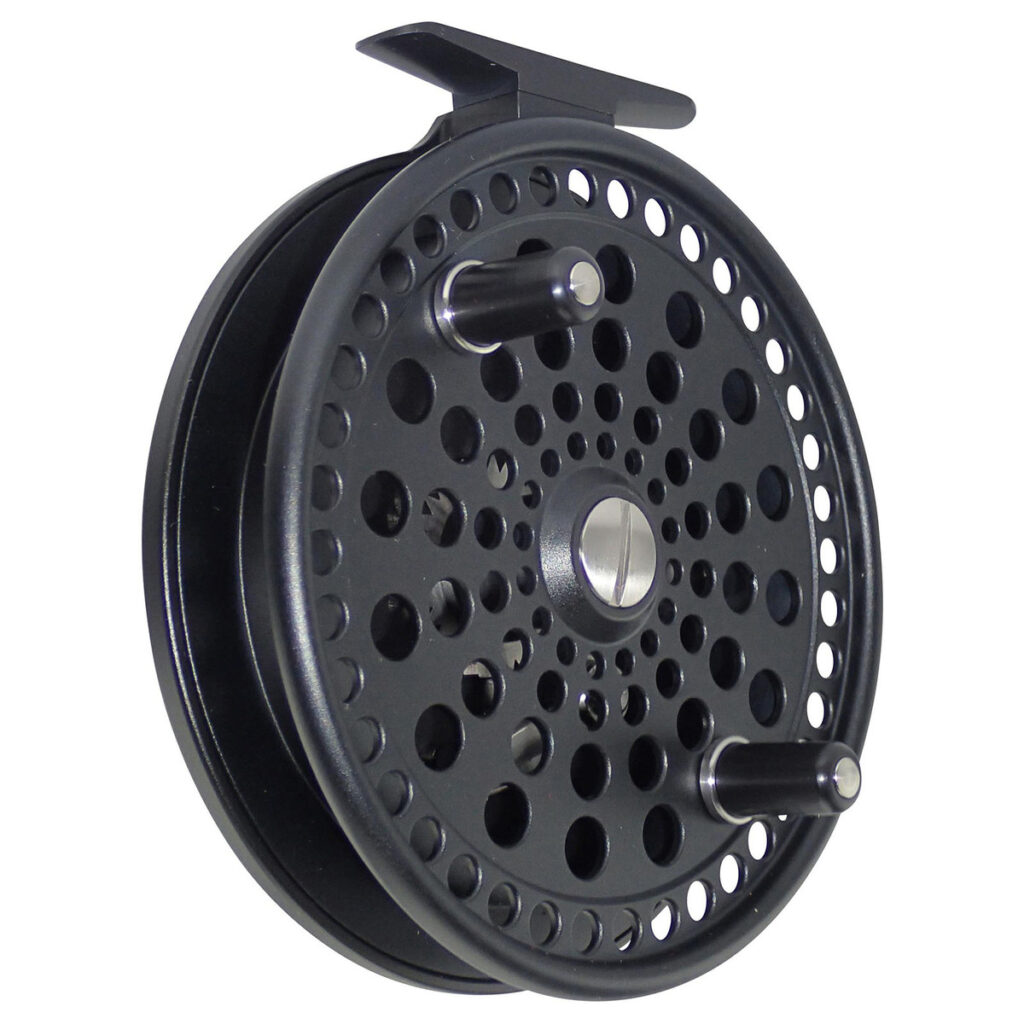
Centerpin fishing reels are a type of reel that is designed for use in freshwater fishing.
They’re very similar to baitcasting reels, but they don’t have a bail arm and instead have a spool that is free-spinning on a pin or bearings.
This design makes them much better suited for casting lighter lures and baits with more accuracy.
How To Cast A Centerpin Fishing Reel
To cast a centerpin fishing reel, you’ll need to open the drag so the spool can spin freely.
Then hold the reel in your dominant hand and place your thumb on the spool to control the line release.
With your other hand, hold onto the rod near the base and use a smooth, consistent motion to cast your line.
Centerpin Fishing Reel Pros & Cons
One advantage of centerpin fishing reels is that they’re very accurate when casting lighter lures and baits.
They’re also relatively simple to use once you get the hang of it.
However, one downside of centerpin fishing reels is that they can be difficult to learn how to use if you’ve never used one before.
Another downside is that they’re not as well-suited for heavier lures and baits like offshore fishing reels are.
Overhead Fishing Reels
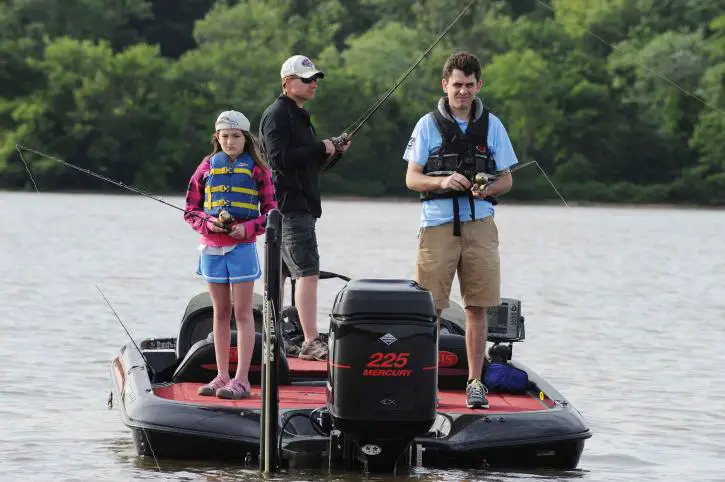
Overhead fishing reels are a type of reel that is designed to be used with heavier lures and baits when fishing from a boat.
They’re usually used for freshwater fishing, but can also be used in saltwater.
Overhead fishing reels have a spool that is mounted on top of the reel and are cast by using your thumb to release the line.
How To Cast An Overhead Fishing Reel
To cast an overhead fishing reel, you’ll need to open the bail arm so the line can run freely off the spool, letting the line drop straight down to the water beneath you.
Then hold the reel in your dominant hand and place your thumb on the spool to control the line release.
Overhead Fishing Reel Pros & Cons
One advantage of overhead fishing reels is that they’re very well-suited for heavier lures and baits.
They’re also relatively simple to use once you get the hang of it.
On the other hand, they’re only suitable for straight-drop fishing from a boat, so you can’t fish well with them from shore.
Offshore Fishing Reels
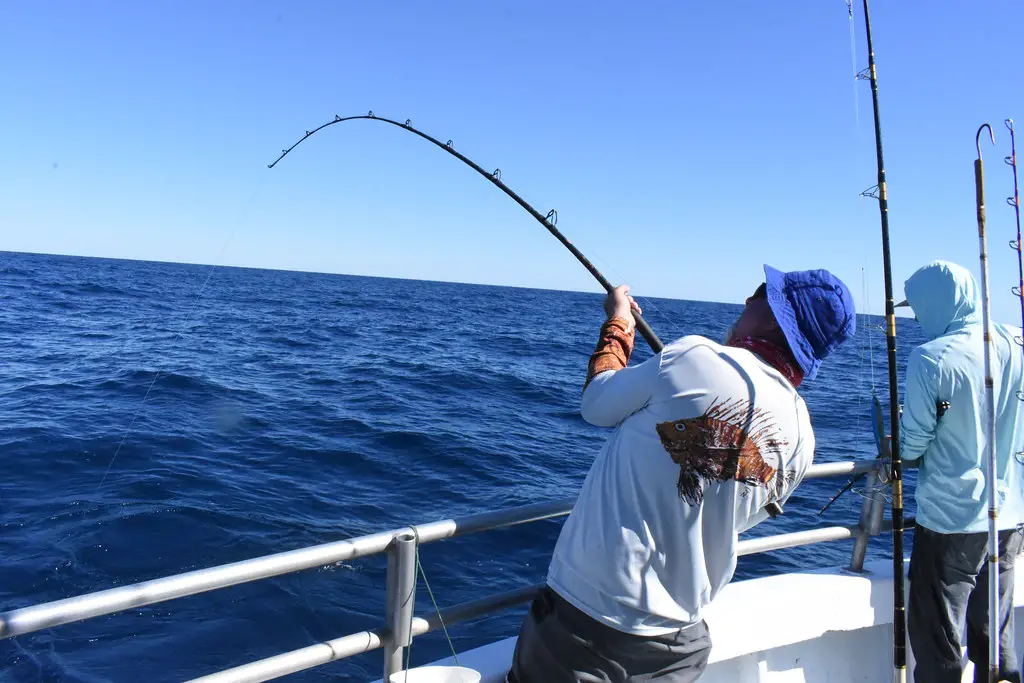
Offshore fishing reels are designed to be used when fishing from a boat in saltwater.
They’re usually very large and can hold a lot of line, which is necessary when fishing in deep waters.
Offshore fishing reels are less of a type of reel, but more a classification of reel, as they can be spinning reels or baitcasting reels, but they are specially designed to handle higher weights of ocean fish and to stand up to the corrosive elements of saltwater.
Which Type Of Fishing Reel Is The Best
So, which type of fishing reel is the best?
The answer to that question depends on what you’re looking for in a fishing reel and what type of fishing you’ll be doing.
If you want a reel that is simple to use and can be used for a variety of different types of fishing, then a spinning reel is probably your best bet.
If you’re taking the kids fishing for the first time, you’re best off going with a spincasting reel thanks to the easy-to-use casting button.
As your skill level progresses, you can consider using a baitcasting reel.
Of course if you’re fly fishing you’ll need a fly reel, and if you’re fishing off the ocean shore, you’ll need a surf reel.
See what we mean? There are so many different kinds of reels because they each have a situation and environment they’re best suited to, so there’s no one-size-fits-all answer.
Wrapping Up Our Guide To Different Types Of Fishing Reels
We hope you enjoyed learning about all the different types of fishing reels and their respective pros and cons!
Now that you know a little bit more about each type of reel, it’s time to start shopping for the perfect one for your needs.
Which types of fishing reels have you had experience with before, and which is your favorite to use? Let us know in the comments below.
Check out our guide on how to string a fishing pole, is fishing a sport, and the best 2 person fishing kayaks while you’re here.

